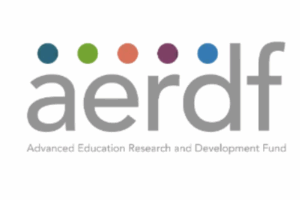Education
Trump administration threatens to strip Harvard University of lucrative patents | Trump administration

The latest phase of the Trump administration’s offensive against Harvard University is a comprehensive review of the university’s federally funded research programs, and the threat to strip the school’s lucrative portfolio of patents.
In a letter to the Harvard president, Alan Garber, posted online on Friday, Donald Trump’s commerce secretary, Howard Lutnick, accused Harvard of breaching its legal and contractual requirements tied to federally funded research programs and patents.
Lutnick also said the commerce department has begun a “march-in” process under the federal Bayh-Dole Act that could let the government take ownership of the patents or grant licenses.
“The Department places immense value on the groundbreaking scientific and technological advancements that emerge from the Government’s partnerships with institutions like Harvard,” Lutnick wrote.
He said that carried a “critical responsibility” for Harvard to ensure that its intellectual property derived from federal funding is used to maximize benefits to the American people.
Harvard did not immediately respond to requests for comment.
Friday’s letter ratchets up White House pressure on Harvard, which it has accused of civil rights violations for failing to take steps dictated by the administration in response to accusations that student protests against Israel’s assault on Gaza were antisemitic.
Harvard sued in April after the administration began stripping or freezing billions of dollars of federal research money.
In his letter, Lutnick demanded that Harvard provide within four weeks a list of all patents stemming from federally funded research grants, including how the patents are used and whether any licensing requires “substantial US manufacturing”.
As of 1 July 2024, Harvard held more than 5,800 patents, and had more than 900 technology licenses with over 650 industry partners, according to the Harvard Office of Technology Development.
Other universities faced with federal research funding losses have signed settlement agreements with the government, including Columbia University, which agreed to pay more than $220m, and Brown University, which agreed to pay $50m.
Harvard’s president reportedly told faculty that a New York Times report that the university was open to spending up to $500m to settle with the government was inaccurate and had been leaked to reporters by White House officials.
The bipartisan Bayh-Dole Act was sponsored by senators Birch Bayh of Indiana and Bob Dole of Kansas and signed into law by Jimmy Carter near the end of his term.
Carter said at the time it was important that industrial innovation promote US economic health, and the legislation “goes far toward strengthening the effectiveness of the patent incentive in stimulating innovation in the United States”.
Many civil rights experts, faculty and White House critics believe the Trump administration’s targeting of schools for supposedly failing to address antisemitism is a pretext to assert federal control and threaten academic freedom and free speech.
Education
Global Artificial Intelligence in Education Market to Reach USD

The global Artificial Intelligence (AI) in the Education Sector market, valued at approximately USD 5.9 billion in 2024, is projected to grow to nearly USD 38.2 billion by 2034, registering a strong CAGR of 20.8%. This growth is fueled by the rising need for personalized learning experiences, faster adoption of virtual classrooms, ongoing teacher shortages, and increasing use of real-time data analytics to improve learning outcomes.
In 2023, over 350 million learners worldwide engaged with AI-powered platforms, with EdTech leaders like Duolingo, BYJU’S, and Pearson AI recording double-digit growth in users. Duolingo’s adaptive engine handled over 1.4 billion daily practices, while BYJU’S facilitated 2.1 million daily learning experiences in India alone. AI tools are transforming teaching methods, streamlining administrative work, and enabling personalized student support.
To Receive A PDF Sample Of The Report, Visit @https://www.emergenresearch.com/request-sample/484
Virtual teaching tools and intelligent tutoring systems are now used by more than 42% of higher education institutions in the U.S. and UK. AI-powered proctoring services such as ProctorU and Examity oversaw over 25 million online exams in 2023, ensuring integrity in digital assessments. Platforms like Google Classroom, Microsoft Education Insights, and ClassDojo provide educators with real-time insights to adapt lessons and support struggling students early.
AI technologies are also helping bridge the education gap in remote areas. In 2023, adaptive learning applications reached around 42 million students in underserved regions across Africa, Asia, and Latin America. Generative AI tools like ChatGPT and Google Gemini are increasingly used for lesson planning, content creation, and reducing teacher preparation time by up to 40%.
Regional Insights
North America leads the market in 2024, backed by strong EdTech investments and early AI adoption in K-12 and higher education. Asia-Pacific is the fastest-growing region due to large-scale government programs in China, India, and South Korea, with China investing over USD 1.2 billion in AI-powered classrooms in 2023. Europe is advancing AI integration through EU funding and partnerships between tech firms and universities.
Market Drivers
Key drivers include the demand for personalized learning, the shift to digital classrooms, and the need for data-driven decision-making. For instance, BYJU’S AI tools in India boosted test scores by 19%, while Khan Academy’s AI tutor “Khanmigo” reached over 200,000 students in just six months. AI analytics tools now assist over 12 million teachers worldwide in tracking student performance.
Browse Detailed Research Report @https://www.emergenresearch.com/industry-report/artificial-intelligence-in-the-education-sector-market
Trends and Innovations
AI is enabling personalized learning, intelligent tutoring systems, and real-time feedback. Accessibility tools such as speech-to-text and translation are supporting over 180 million students annually. AI integration with extended reality (XR) is enhancing immersive learning, while nonprofit programs are expanding access to digital education in underserved areas. Growing attention to AI ethics and student data privacy is shaping industry practices.
Market Restraints
Challenges include data privacy concerns, the digital divide, educator resistance, and policy uncertainty. Limited internet access and infrastructure in rural regions restrict AI adoption, and inconsistent regulations between countries increase compliance costs. Teacher training and clear ethical standards are essential for overcoming these barriers.
Segment Highlights
Technology: Machine Learning & Deep Learning held the largest share (39%) in 2024, followed by Natural Language Processing (24%) and Computer Vision (15%).
Platform: Cloud-based solutions dominated with 61% market share due to scalability and cost efficiency.
Applications: Virtual Learning Environments led with 33% share, while Intelligent Tutoring Systems and Language Learning tools showed the fastest growth.
End Use: K-12 schools accounted for 41% of deployments in 2024, with strong growth also seen in higher education and corporate training sectors.
Buy Now: @https://www.emergenresearch.com/select-license/484
Some major players operating in the artificial intelligence in the education sector market are:
Google LLC
Microsoft Corporation
Amazon Web Services, Inc.
International Business Machines Corporation
Cognizant Technology Solutions Corp.
Pearson PLC
Nuance Communications Inc.
Blackboard Inc.
Carnegie Learning, Inc.
Cognii, Inc.
Artificial Intelligence in the Education Sector Market Market Segmentation Analysis
By Component Outlook (Revenue, USD Billion, 2021-2034)
Solutions (Intelligent Tutoring Systems, Learning Management Systems, AI-Powered Content Creation, Adaptive Assessments, Analytics Platforms)
Services (Professional Services, Managed Services, AI Training and Consulting)
By Deployment Mode Outlook (Revenue, USD Billion, 2021-2034)
Cloud-Based
On-Premises
By Technology Outlook (Revenue, USD Billion, 2021-2034)
Machine Learning & Deep Learning
Natural Language Processing (NLP)
Computer Vision
Speech & Voice Recognition
Others
By Application Outlook (Revenue, USD Billion, 2021-2034)
Virtual Learning Environments
Intelligent Tutoring Systems
Student Information Systems
Classroom Management
Language Learning
Accessibility Tools
Others
By End-User Outlook (Revenue, USD Billion, 2021-2034)
K-12 Schools
Higher Education Institutions
Vocational & Technical Training
Corporate Training & Workforce Development
Government & Nonprofit Organizations
By Regional Outlook (Revenue, USD Billion, 2021-2034)
North America
U.S.
Canada
Mexico
Europe
Germany
United Kingdom
France
Italy
Spain
Nordics
Asia Pacific
China
India
Japan
South Korea
Australia
Latin America
Brazil
Argentina
Middle East & Africa
Saudi Arabia
UAE
South Africa
Nigeria
Browse More Report By Emergen Research:
Automated Suturing Devices Market
https://www.emergenresearch.com/industry-report/automated-suturing-devices-market
Burial Insurance Market
https://www.emergenresearch.com/industry-report/burial-insurance-market
Empty Capsules Market
https://www.emergenresearch.com/industry-report/empty-capsules-market
Forensic Imaging Market
https://www.emergenresearch.com/industry-report/forensic-imaging-market
Contact Us:
Eric Lee
Corporate Sales Specialist
Emergen Research | Web: www.emergenresearch.com
Direct Line: +1 (604) 757-9756
E-mail: sales@emergenresearch.com
Visit for More Insights: https://www.emergenresearch.com/insights
About Us:
Emergen Research is a market research and consulting company that provides syndicated research reports, customized research reports, and consulting services. Our solutions purely focus on your purpose to locate, target, and analyse consumer behavior shifts across demographics, across industries, and help clients make smarter business decisions. We offer market intelligence studies ensuring relevant and fact-based research across multiple industries, including Healthcare, Touch Points, Chemicals, Types, and Energy. We consistently update our research offerings to ensure our clients are aware of the latest trends existent in the market. Emergen Research has a strong base of experienced analysts from varied areas of expertise. Our industry experience and ability to develop a concrete solution to any research problems provides our clients with the ability to secure an edge over their respective competitors.
This release was published on openPR.
Education
The role of AI in Purdue University’s academic future – Indianapolis News | Indiana Weather | Indiana Traffic

This is the second entry of WISH-TV’s deeper dive into artificial intelligence in education, first examining how AI is being used in colleges and universities.
WEST LAFAYETTE, Ind. (WISH) — Students start the fall semester at Purdue University Aug. 25.
Leaders there say artificial intelligence will likely be a part of all college students’ education. However, how much or how little depends on their major, their professors, and the students themselves.
Jamil Mansouri just graduated from Purdue in May and double majored in Agricultural Economics and Political Science. He will soon start graduate school for Business Analytics and Data Management. He has become familiar with AI as a student.
“I think there are fields where AI can be your biggest tool or not help you that much,” Mansouri said.
He is also a member of the Student Pedagogy Advocates program and is a student voice while the university develops frameworks for how to use and teach AI.
(WISH Photo)
When asked what people should know about AI in the university setting, Mansouri said, “The student body is not a monolith, it is very major specific. The second thing is students want consistent frameworks and guidance when using it.
“A lot of faculty have very different perspectives on AI and it translates into their coursework. Some faculty actively support it and give you these resources. Others say ‘If I even find a hint of it, I’m going to give you an F in the class. Students feel confused students don’t know exactly where to go with it where to engage with these tools.”
That’s where David Nelson comes into play. He is the associate director for Purdue Center for Instructional Excellence and a courtesy faculty in the John Martinson Honors College.
He helps the 2,400 faculty members stay updated on educational trends, such as AI.
“AI disrupts a lot of processes that we’ve come to rely on an education,” Nelson explained. “AI is creating a lot more freedom of choice in cognitive work. That’s a big part of what it is doing right now and we haven’t had to worry about that choice. So, now are we.”
He’s helping implement Purdue University’s AI policy.
“Rather than institute one kind of broad AI policy, the university has encouraged different instructors and different departments to really investigate it,” Nelson said.
Professors will set the AI policy for their own classes; the level of use and implementation will depend on the course, the subject and the faculty member.
“We’re very much encouraging transparency for faculty instructors in their AI policies and those can be very different from class to class. We’re also encouraging faculty and instructors to make sure that there is a human in the loop when trying to give feedback or assessment to students by using any AI,” he said. “Everything else has been kind of ‘We’d like you to experiment we want you to be aware of what existing rules are about academic integrity and research’ — but it’s a lot of trust in full-time professionals to do their jobs.”

(WISH Photo)
Purdue is trusting students, too.
Nelson says there are pros and cons to AI: A chat bot can act as a study buddy, or something to bounce ideas off of when brainstorming. It can even act as a language translator; however, it should not do the thinking for students.
Nelson encourages students to learn how algorithms work and determine what they really want to accomplish with their higher education experience – and encouraging staff to have bold and up front conversations with students about AI.
“How can we incentivize change the way that we are encouraging students engaging with them so that they’re making the proactive choice to learn and realize this is something that could be harmful or helpful to me and if they don’t know what guidance can they get?” Nelson said.
The university says there will not be a freshman orientation focused on AI. This will be a subject individual professors will approach at the start of each semester.
While the university is embracing the technology, faculty at Purdue also hope it will encourage students to really think about what they want to get out of their education and perhaps promote face to face interactions with professors.
Mansouri said this has prompted a lot of professors to change their course work.
“It is no secret that in computer science you can get up through your junior year by just using Chat GPT to guide you through the code. So, professors are adapting so now you have to come in and have one-on-one conversations and explain your coding and how you got there. You’re going to see different projects I think. You’re going to see a lot more presentations – a lot more of the social side of it and a lot more, kind of, showing and talking your way through something rather than writing on paper how you got to a solution,” Mansouri said.
When it comes to the issue of cheating, the university says AI detectors don’t work well anymore.
The school is relying on professors getting to know their students and feeling when something seems off. Nelson says he has had to do this with students, and generally, they admit to the generative AI use in circumstances that are not allowed.
“Identifying that is a feeling as well as a discussion. But when students do admit to it it is a violation of academic integrity and so it does violate the university’s honesty policy and there are the same kind of consequences from directly copying from one previous static document to your own work and saying, ‘This is what I did.’” Nelson said.
The university is also encouraging students to take Purdue’s Honor Pledge.
According to its website, students developed the honor pledge to advance a supportive environment that promotes academic integrity and excellence. “It is intended that this pledge inspires Boilermakers of all generations to stay ‘on track’ to themselves and their University,” according to Purdue.
As for Chat GPT’s advice to college students?
The chat bot’s bottom line is that it’s a tool. It can generally be abused. But, it can challenge you to think critically and help shape your education and future career.
“I think, fundamentally, I agree with its perspective on that,” Mansouri said. “It can give you an edge but it can also harm your education. So use it as the tool that it is and it can be a double-edged sword.”
Nelson said the best analogy for AI is when radio started. It was a paradigm shift in technology that was suddenly everywhere…
He says AI is also a paradigm shift for education and potentially careers. Some students tell News 8 they are re-thinking or worried about jobs after school because of AI’s impact.
Next in this series, WISH-TV explore how AI is changing what students choose to do in higher education, the trades, and its impact on careers.
That story will air Aug. 18 on Daybreak.
Education
How schools are tackling absenteeism

(Note: This is the second piece in a two-part series on absenteeism in schools. Read the first part, on seven insights from researchers.)
Chronic absenteeism, when students miss 10 percent or more of the school year, is 50 percent higher across the nation than before the pandemic. Researchers say it’s difficult for schools to address the problem because it is both so intense, with students missing huge chunks of the school year, and so extensive, affecting both rich and poor students and even high achievers. And the reasons vary widely, from asthma and bullying to transportation problems and the feeling that school is boring.
“It’s hard to know where and when to target resources,” said Sam Hollon, a data analyst at the American Enterprise Institute, which hosted a symposium on the problem in May. “Who do you help when every student potentially can be a candidate for help?”
Related: Our free weekly newsletter alerts you to what research says about schools and classrooms.
The Trump administration’s immigration enforcement is exacerbating the problem. A June draft paper by Stanford University professor Thomas Dee calculated that recent raids coincided with a 22 percent increase in daily student absences with particularly large increases in absenteeism among the youngest students.
Talking about the problem isn’t enough. Researchers say they want to study more schools that are making headway. It remains unclear if there are broadly applicable fixes or if each school or even each student needs individual solutions. Some underlying root causes for skipping school are more complex than others, requiring psychotherapy or housing assistance, which schools can’t provide. Here are a few examples of how very different communities are tackling the problem.
Providence: Bus stops and weekend food bags
Principal W. Jackson Reilly of Nathanael Greene Middle School in Providence, Rhode Island, said that when he arrived in April 2023, half of his 900 students in grades six to eight were chronically absent, up from 30 percent of students before the pandemic. Thirty percent of his teachers were also chronically absent. Achievement scores were in the state’s bottom 1 percent.
Reilly managed to slash his chronic absenteeism rate in half to 25 percent this past 2024-25 year. That’s still high. One in four students missed more than 18 days of school a year. But, it’s better.
He began by identifying 150 kids who were just over the threshold for chronic absenteeism, those who missed between 18 and 35 days, hoping that these kids would be easier to lure back to school than those who were more disengaged. Reilly and a group of administrators and guidance counselors each took 10 to 15 students and showed their families how much school they had missed and how low their grades were. His team asked, “What do you need in order for your kid to be coming to school?’”
The two most common replies: transportation and food.
Related: The chronic absenteeism puzzle
Many students lived only a mile away, too close to school to qualify for bus service. Yet the walk deterred many, especially if it was raining or snowing. Yellow buses often passed these children’s homes as they were transporting children who lived farther out, and Reilly convinced the district to add stops for these chronically absent children.
Ninety percent of his students come from families who are poor enough to qualify for the federal free or reduced-price lunch program and 80 percent are Hispanic. Although many children were fed breakfast and lunch at school, their families admitted that their kids would get so hungry over the weekend that they didn’t want to wake up and come to school on Mondays. Reilly partnered with a food pantry and sent bags of meat and pasta home with students on Fridays.
Individual attention also helped. At the start of each school day, Reilly and his team check in with their assigned students. Kids who show up get five “green bucks” to spend on snacks and prizes. Administrators call the homes of those who didn’t come to school. “If they did not answer the phone, we’d make a home visit,” said Reilly.
The most dramatic overhaul was scheduling. Reilly scrapped individual schedules for students and assigned four teachers to every 104 students. The kids now move in pods of 26 that take all their classes together, rotating through the same four teachers throughout the day. The classrooms are right near each other, creating a smaller community within the school.
“It’s all about relationship building,” said Reilly. When students look forward to seeing their classmates and teachers, he said, they’re more motivated to come to school.
Researchers say fostering relationships is effective. Hedy Chang, executive director of Attendance Works, a nonprofit organization that advises schools on how to boost attendance rates, said it’s still a battle to persuade school leaders (and school board members) that making school a more welcoming place is more productive than punishing kids and families for skipping school.
Reilly said his school now posts the lowest student and teacher chronic absenteeism rates in Providence. And he said his school is the highest performing middle school in the city and among the highest statewide in reading.
New York City: Catching the butterflies
A cluster of New York City high schools are taking a more data-driven approach, guided by New Visions, a consulting organization that supports 71 city high schools.
After some experimentation, New Visions staff saw strong improvement in attendance in one subgroup of students who were on the cusp of missing 10 percent of school days, but had not yet crossed the chronic absenteeism threshold. These are students who might miss a day or two every week or every other week but were relatively engaged at school. Jonathan Green, a New Visions school improvement coach who is spearheading this effort, calls them “butterflies.” “They would flutter in and out every week,” he said.
Green suggested that someone at school meet weekly with these butterflies and show them their attendance data, set goals for the coming week and explain how their attendance was leading to better grades. The intervention took two to five minutes. “There were marked changes in attendance,” said Green.
New Visions built a website where school administrators could print out two-page documents for each student so the data, including monthly attendance and tardiness, appeared in an easy-to-digest format. The quick meetings took place for eight to 10 weeks during the final grading period for the semester. “That’s when there’s the most opportunity to turn those potentially failing grades into passing grades,” said Green. “We were finding these sweet spots within the school calendar to do this very high resource, high-energy intensive weekly check-in. It’s not something that anyone can easily scale across a school.”
Related: Tracking student data falls short in combating absenteeism at school
Staff had to figure out the bell schedule for each child and intercept them between classes. One succeeded in holding their entire caseload of students below the chronic absenteeism threshold. Not everyone thought it was a good idea: Some school administrators questioned why so much effort should go into students who weren’t yet chronically absent rather than students in greater trouble.
The dramatic results help answer that question. Among schools in the Bronx that volunteered to participate in the butterfly intervention, chronic absenteeism rates dropped 15 percentage points from 47 percent in 2021 to 32 percent in 2025, still high. But other Bronx high schools in the New Visions network that didn’t try this butterfly intervention still had a chronic absenteeism rate of 46 percent.
Green said this solution wouldn’t work for other high schoolers. Some have trouble organizing their study time, he said, and need more intensive help from teachers. “Two- to five-minute check-ins aren’t going to help them,” said Green.
Indianapolis: Biscuits and gravy
The leader of an Indiana charter school told me he used a system of rewards and punishments that reduced the chronic absenteeism rate among his kindergarten through eighth graders from 64 percent in 2021-22 to 10 percent in 2024-25.
Jordan Habayeb, the chief operating officer of Adelante Schools, said he used federal funds for the school breakfast and lunch program to create a made-from-scratch restaurant-style cafeteria. “Fun fact: On homemade biscuit and gravy days, we saw the lowest rates of tardies,” he said.
Researchers recommend avoiding punishment because it doesn’t bring students back to school. But Habayeb said he adheres strictly to state law that requires schools to report 10 absences to the state Department of Child Services and to file a report with the county prosecutor. Habayeb told me his school accounted for a fifth of truancy referrals to the county prosecutor.
The school created an automated warning system after five absences rather than waiting for the critical 10-day loss. And Habayeb said he dispatched the safety and attendance officer in a van to have “real conversations with families rather than being buried in paperwork.” Meanwhile, students who did show up received a constant stream of rewards, from locker decorations to T-shirts.
Parent education was also important. During mandatory family orientations, the school illustrated how regular attendance matters for even young children. “We shared what a child might miss during a three-day stretch in a unit on ‘Charlotte’s Web’ — showing how easily a student could leave with a completely different understanding of the book,” said Habayeb. “This helped shift perspectives and brought urgency to the issue.”
Kansas City: Candy and notes
School leaders in Kansas City, Kansas, shared some tips that have worked for them during a webinar earlier this month hosted by Attendance Works. One elementary school reduced its chronic absenteeism from 55 percent in 2021 to 38 percent in 2024 by assigning all 300 students to an adult in the building, encouraging them to build an “authentic” relationship. Teachers were given a list of ideas but were free to do what seemed natural. One teacher left candy and notes on their assigned students’ desks. A preschooler proudly pasted his note, which said he was a “genius,” on the front door of his house. “The smiles kids have on their faces are amazing,” said Zaneta Boles, the principal of Silver City Elementary School.
When students do miss school, Boles said educators try to take a “non-blaming approach” so that families are more likely to divulge what is going on. That helps the school refer them to other community agencies for assistance.
Albuquerque: A shining example regroups
Alamosa Elementary School in Albuquerque, New Mexico, was once a shining example of a school that persuaded more families to send their kids to class. Chronic absenteeism fell as low as 1 in 4 students in 2018, when The Hechinger Report wrote about the school.
But Alamosa has not been immune from the surge of absenteeism that has plagued schools around the nation. Chronic absenteeism spiked to 64 percent of students during the 2021-22 school year, when Covid variants were still circulating. And it remained shockingly high with 38 percent of students missing more than 10 percent of the 2024-25 school year — exactly matching the 50 percent increase in chronic absenteeism across the country since 2019.
“We were on a roll. Then life happened,” said Daphne Strader, Albuquerque Public Schools’ director of coordinated school health, who works to reduce absenteeism.
Strader said Alamosa and other Albuquerque schools have made some successful changes to how they’re tackling the problem. But the volume of absenteeism remains overwhelming. “There’s so many kids who have needs,” Starder said. “We need more staff on board.”
Related: 7 insights about chronic absenteeism, a new normal for American schools
Strader said attendance interventions had been “too siloed” and they’re focusing more on the “whole child.” She’s encouraging schools to integrate attendance efforts with other initiatives to boost academic achievement and improve student behavior. “Students are hungry, they’re dysregulated, they don’t have grit,” said Strader, and all of these issues are contributing to absenteeism. But she also concedes that some students have more severe needs, and it’s unclear who in the system can address them.
Her biggest advice for schools is to focus on relationships. “Relationships drive everything,” said Strader. “One of the major consequences of the pandemic was the isolation. If I feel a sense of belonging, I’m more likely to come to school.”
Contact staff writer Jill Barshay at 212-678-3595, jillbarshay.35 on Signal, or barshay@hechingerreport.org.
This story about how schools are tackling absenteeism was written by Jill Barshay and produced by The Hechinger Report, a nonprofit, independent news organization focused on inequality and innovation in education. Sign up for Proof Points and other Hechinger newsletters.
-

 Events & Conferences3 months ago
Events & Conferences3 months agoJourney to 1000 models: Scaling Instagram’s recommendation system
-

 Funding & Business1 month ago
Funding & Business1 month agoKayak and Expedia race to build AI travel agents that turn social posts into itineraries
-

 Jobs & Careers1 month ago
Jobs & Careers1 month agoMumbai-based Perplexity Alternative Has 60k+ Users Without Funding
-

 Education1 month ago
Education1 month agoVEX Robotics launches AI-powered classroom robotics system
-

 Education1 month ago
Education1 month agoAERDF highlights the latest PreK-12 discoveries and inventions
-

 Mergers & Acquisitions1 month ago
Mergers & Acquisitions1 month agoDonald Trump suggests US government review subsidies to Elon Musk’s companies
-

 Jobs & Careers1 month ago
Jobs & Careers1 month agoAstrophel Aerospace Raises ₹6.84 Crore to Build Reusable Launch Vehicle
-

 Podcasts & Talks1 month ago
Podcasts & Talks1 month agoHappy 4th of July! 🎆 Made with Veo 3 in Gemini
-

 Podcasts & Talks1 month ago
Podcasts & Talks1 month agoOpenAI 🤝 @teamganassi
-

 Jobs & Careers1 month ago
Jobs & Careers1 month agoTelangana Launches TGDeX—India’s First State‑Led AI Public Infrastructure

